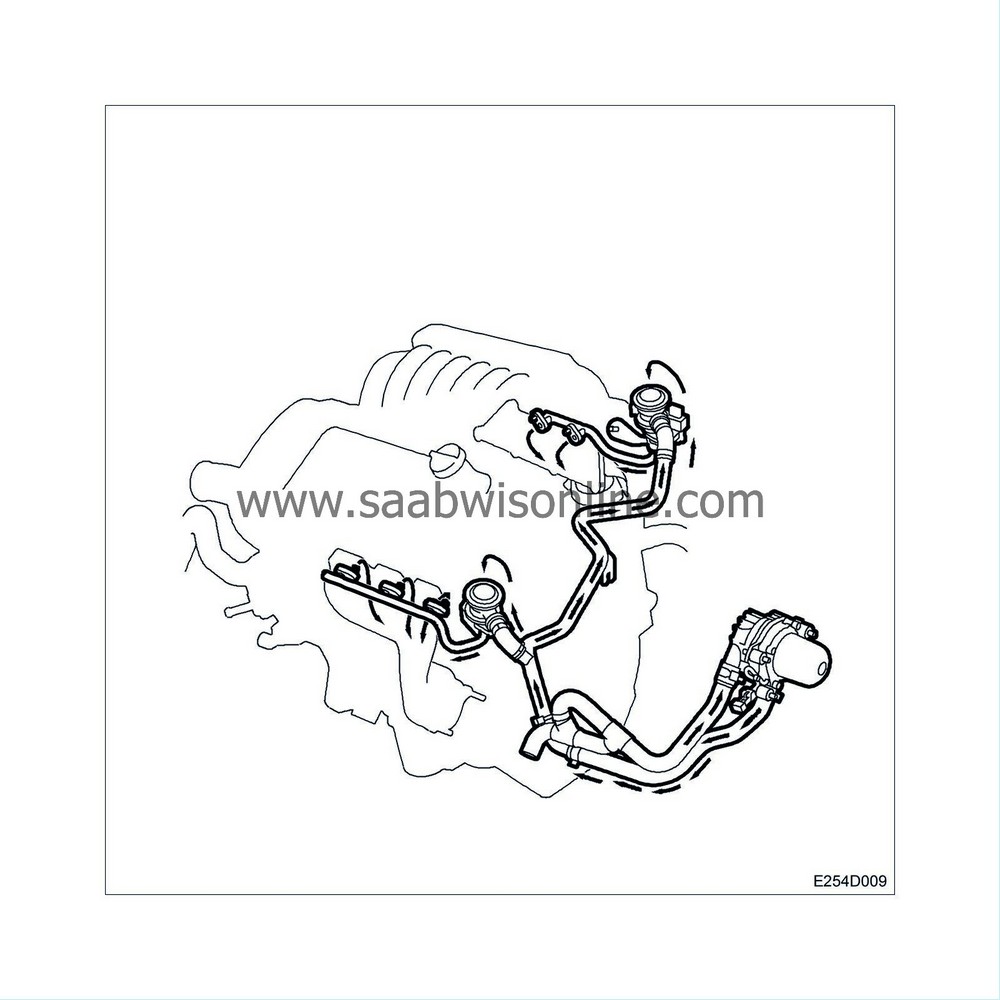Secondary air injection
| Secondary air injection |
Additional fuel is supplied to banks 1 and 2 to compensate for the extra air. The extra fuel is supplemented additionally to the normally calculated fuel quantity. Trionic calculates the extra quantity of fuel based on two different matrices, one for the front bank and one for the rear.
The SAI pump will not start if the battery voltage exceeds 16 V. This is to prevent overloading the pump.
The SAI pump will not start if the mass air flow exceeds 700 mg/combustion (mg/c). The normal combustion will then be sufficient to heat up the catalytic converter.
The SAI pump starts when the engine is started provided the charge air temperature and engine coolant temperature are within the interval -9°C - +30°C and the battery voltage and air mass consumption are within the limits specified above.
The engine is allowed to turn over for a number of combustions before the SAI pump starts. The duration of this delay depends on the engine coolant temperature and can vary between 40 - 75 combustions.
The SAI pump continues to run for a further 15 combustions after the system has stopped calling for SAI. This is to avoid unnecessary emission of hydrocarbons once the SAI functions have been terminated.
The car must have been turned of for at least 15 minutes before the SAI pump will start when the car is restarted if the charge air or engine coolant temperature is below +30°. One condition, however, is that the pump has been active during the driving cycle.
Non-return valves have been fitted, one on each cylinder bank, to prevent exhaust gases leaking from the SAI system. They will close when the pump stops.



